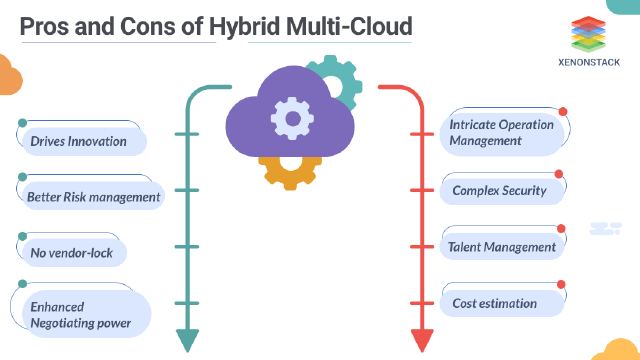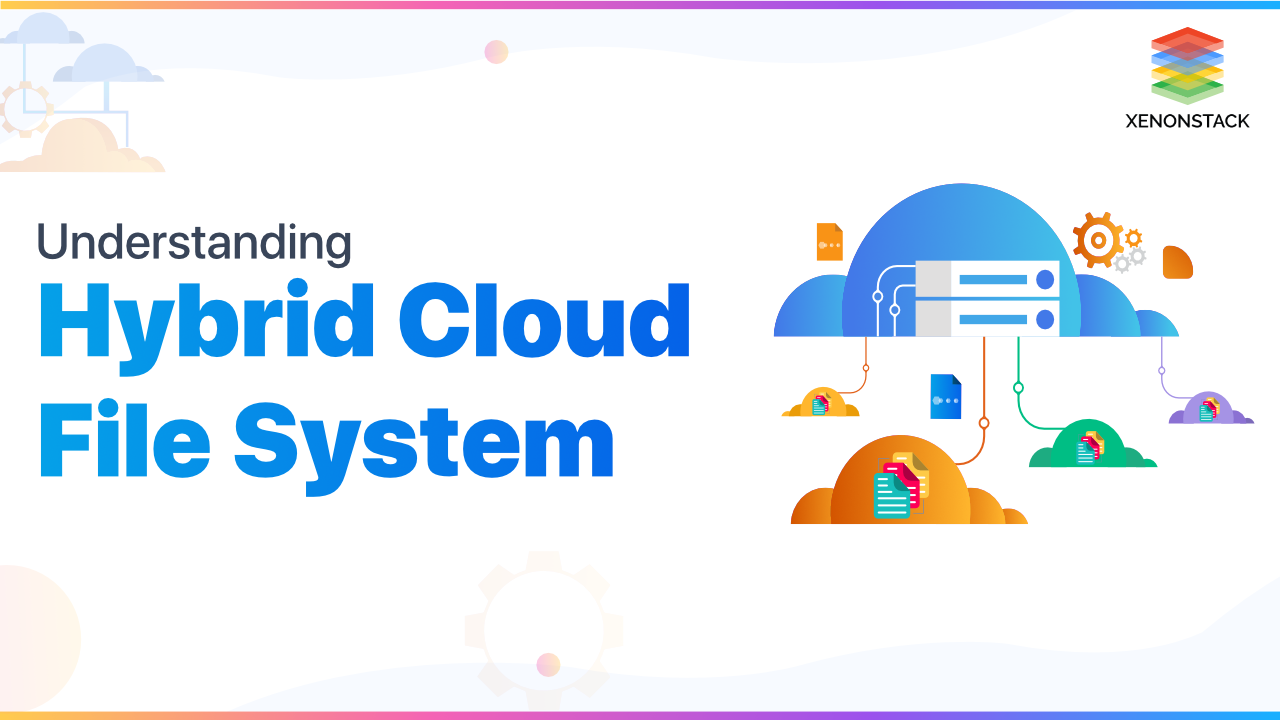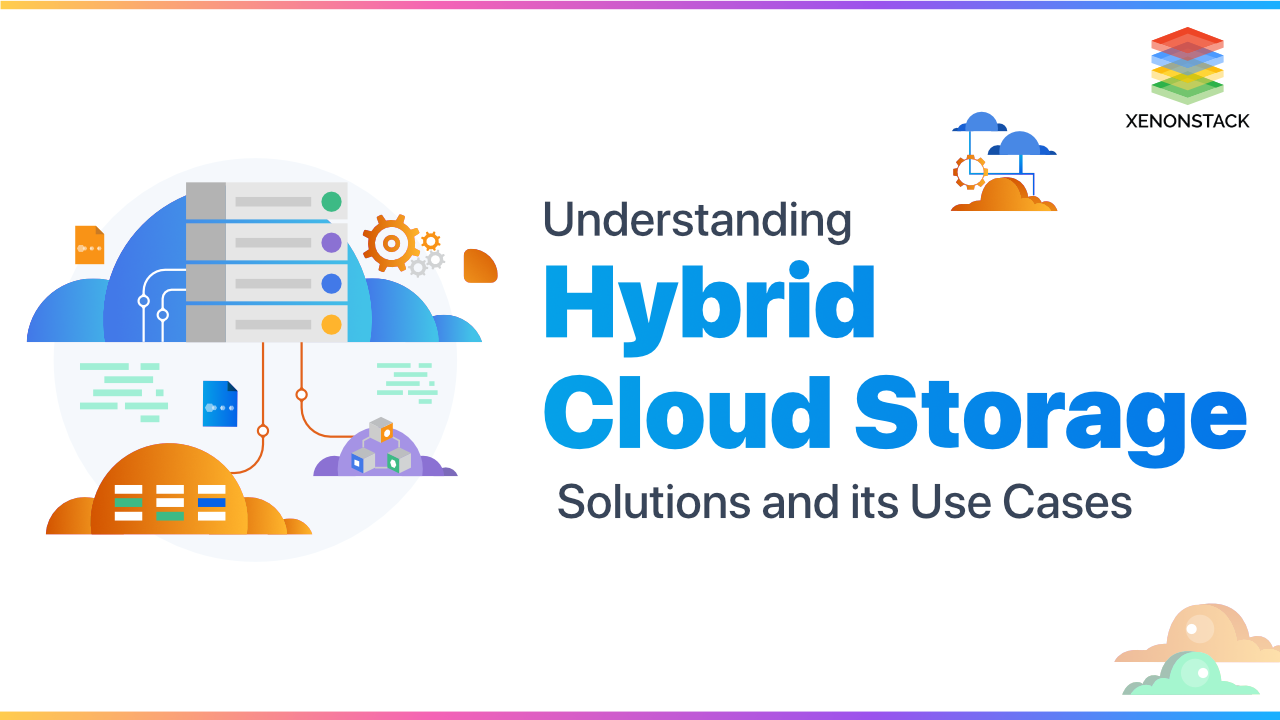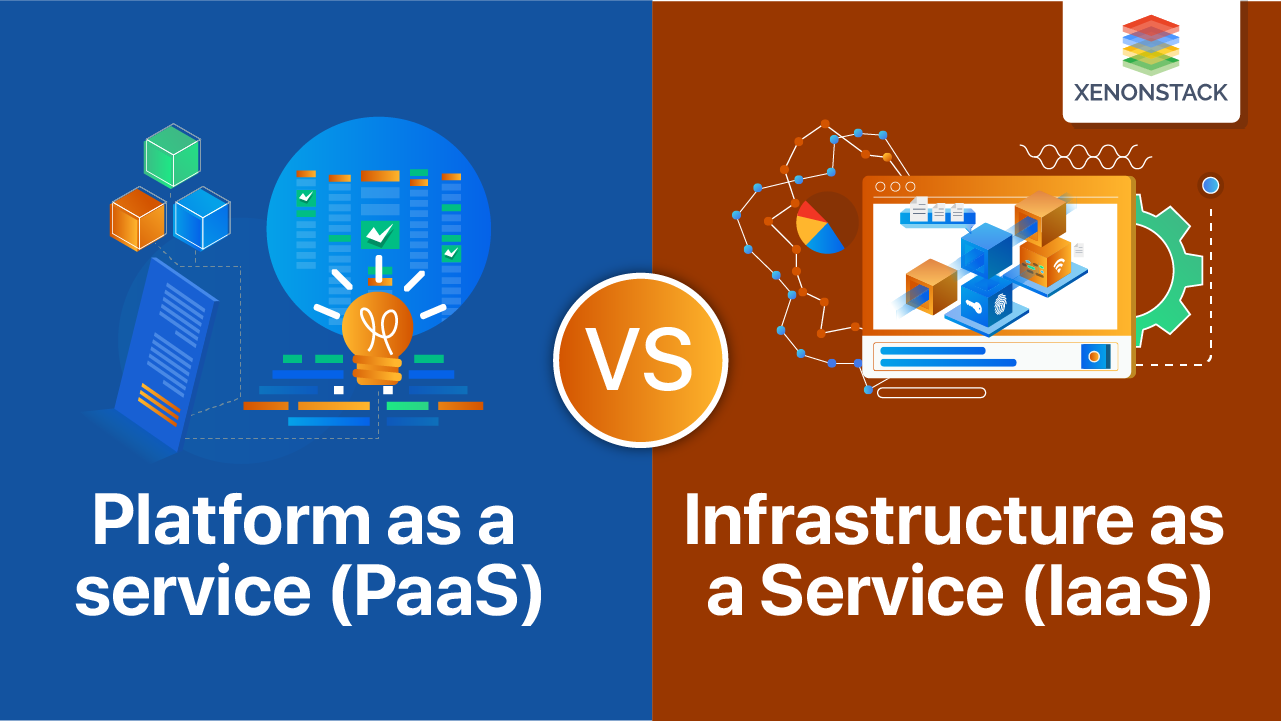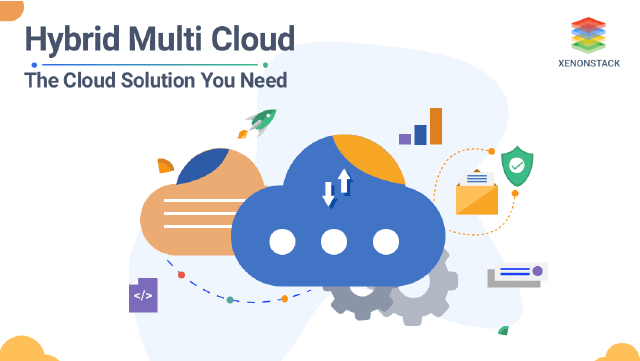
Overview of Hybrid Multi-Cloud environment
Over several cloud environment, it refers to be a distribution of various cloud software, applications. Hybrid Multi-Cloud environment removes the usage of a single cloud by providing the utilization of two or more public clouds and private clouds as well. In this blog, we will cover various aspects of Hybrid Multi-Cloud management and its best practices.What is Hybrid Multi-Cloud?
Hybrid Multi-Cloud is a term used while using multiple Cloud Computing with all the storage services within a network architecture. It uses the various cloud computing services from multiple different cloud vendors, and private cloud deployment ( own servers and infrastructure). It provides a better way of distributing computing resources. It also minimizes the risk of data loss because it allows for an environment that could be all-public, all-private or a combination of both. It provides better storage and also increases computing power. In recent years the cloud has resulted in moving to multi-tenant public clouds and hybrid clouds rather than that of single-user private clouds.What is the difference between the Hybrid Cloud, Multi-Cloud and Hybrid Multi-Cloud?
The difference between the Hybrid Cloud, Multi-Cloud and Hybrid Multi-Cloud is in the image below will clear the confusion.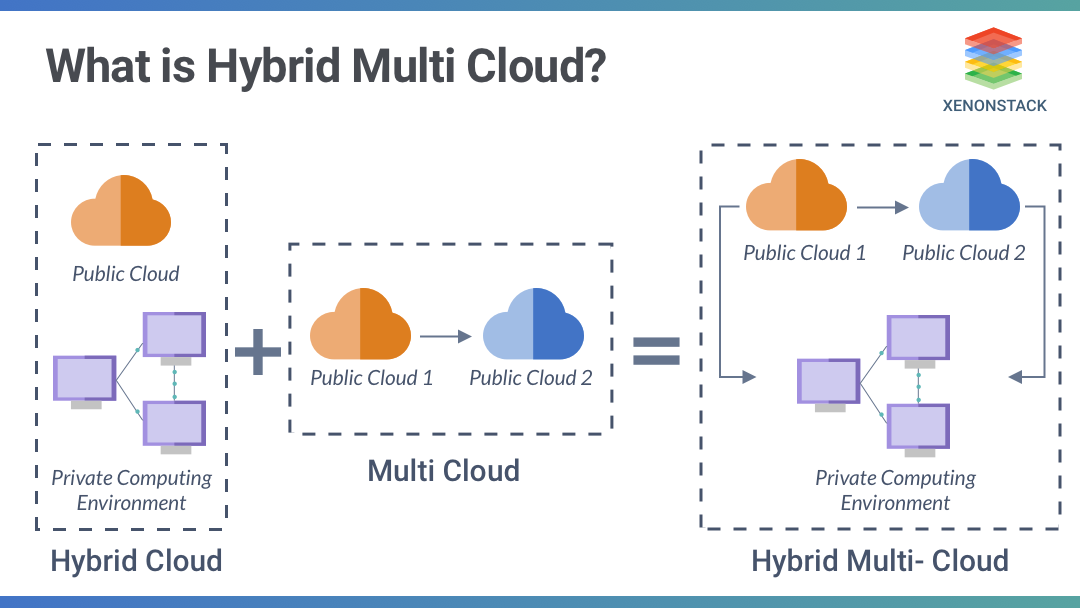
Why use a Hybrid Multi-Cloud Strategy?
It provides a better way for the organizations to select various cloud services from different providers because some perform better tasks than that of others. It is a fact that so because some platforms are designed for the massive data transfer or may have integrated machine learning capabilities. There are various reasons for which organizations use Hybrid Multi-Cloud strategy :- No Vendor Lock-in: Avoids dependency on one vendor.
- Flexibility and Scalability: Cloud needs changes with the market and ever-increasing data. When a business need changes Hybrid Multi-Cloud does the same for you, scale down elements to the private cloud when not needed and scale up what is required.
- Risk and Disaster Management: Sometimes, infrastructure service may not be available, or sometimes it may be due to disaster, but mostly it happens due to human error. And multi-cloud overcomes this by ensuring that one may always have data storage and compute resources availability so one can avoid halt.
- Cost-Performance Optimization: Some Organizations want best in the budget. Hybrid Multi-Cloud strategy gives such freedom to them. Example, would enable an organization to take advantage of AWS spot instances and stable computing power at the lowest price, but still, use low-priority VMs on Azure or the private cloud.
- Compliance: Enterprises can achieve their goals regarding compliance regulations, for governance and risk management by a multi-cloud environment.
What is Hybrid Multi-Cloud Management?
A dynamic, Multi-Cloud Management Architecture may have greater organizational agility and capacity for prompt detection, review, and response to adjustments in these mixed environments. The consistent workflow is managed by Hybrid Multi-Cloud Manager that provides better security connectivity, provision of infrastructure (tear-down/set-up) across various cloud platforms. It gives the prevention from the multiple challenges by delivering the visibility to a complex hybrid multi-cloud architecture The primary goals that can be achieved by the well-defined Hybrid Multi-Cloud management are given below:- Self-Service Capabilities: it eliminates the traditional resource provision.
- Workflow Automation: Cloud management permits workflow automation. To create and manage the computing instances organizations can take various actions without human intervention.
- Cloud Analysis: By monitoring, the organization can meet its requirements by using the best available services. They can also change the cloud providers from the public to private clouds by using matrixes.
"Multicloud is no longer a matter of 'if' — it's a matter of 'when'". Santhosh Rao, Senior Director Analyst- Gartner
What are the challenges in Hybrid Multi-Cloud Management?
Listed below are the various challenges in Hybrid Multi-Cloud management:- Cost: Using Hybrid Multi-cloud services, many companies suffer from significant expenses due to poor multi-cloud management. As from various cloud vendors, organizations use multiple-services, and sometimes it becomes difficult to utilize and get full-fledged visibility all of the services. And hence companies need to pay them for unused as well.
- Performance: As end-users use various applications so IT operation team needs to provide the surety of speed and return to them from complex hybrid multi-cloud environments. Humans cannot monitor data and identify problems effectively because of the scale of monitoring data.
- Automation: In a hybrid multi-cloud environment, various application development organizations have slowed down because of their manual processes to create and modify workflows and to get applications ready for production.
- Cloud Sprawl: if any of the organizations adopt a multi-cloud strategy, then they have to prevent app sprawl. Whenever users fail to incorporate unused services of cloud, then cloud sprawl occurs. Cloud sprawl will create a resource visibility issue that can be caused due to workloads that may be moving between the clouds frequently, because of which the cloud bill will be impacted. For Example, employees in an organization may be dependent on a particular cloud for the specific workloads, and others may not choose that across the entire organization. So it means that across multiple public cloud platforms, the same app might be open. A complete, consciously, and carefully drafted Hybrid Multi-Cloud Strategy can solve this issue.
- Migration: it may be a distinctive challenge for various organizations to migrate to hybrid multi-cloud, especially when it involves remote locations, mobile users, etc. To ensure the security legacy networks may often lead to two choices- backhaul cloud traffic to send cloud traffic directly onto the internet.
What are Hybrid Multi-Cloud Best Practices?
Hybrid Multi-cloud provides multiple computing, so there can be a security challenge of protecting the data in a better way across various cloud providers. Whenever an organization advance towards multi-cloud, security is handled by a third party partner with a different perspective. So here are various Hybrid Multi-Cloud best practices:- Understanding how shared models work: one may know that one's organization's partners and all the stakeholders should understand that how the shared security models have been applied to the cloud vendors. It should be the duty of the service vendors to provide security for their own infrastructures, and they should offer various capabilities to the organization for the protection of their data being within their support because the company will be responsible for how to use their data within the particularly given infrastructure.
- Choosing the Right Cloud Vendors: one should know about their products and services and cybersecurity policies for their data as well. And every member involved within the multi-clouding (stakeholders, security staff, etc.) should know about details of the vendor's services that may also include decision making.
- Understanding accounts and deployment zones: by confirming the organization's responsibility part of the shared security model requirement, one may understand various deployment zones where one may need visibility to monitor.
- Security is a process, not a product: being multi-cloud network security should be check and access regularly because the infrastructure and software may change with the time with the cybersecurity threat.
What are the Pros and Cons of Hybrid Multi-Cloud?
Pros of Hybrid Multi-Cloud
As each cloud service provider has strength and weakness, so depending on the service needs for regarding the application, you can choose the correct service to from the service provider to build the app. But still, there are various benefits to move into multi-cloud strategy, so here are several advantages of this approach:- Drives Innovation: the best power of multi-cloud is that it provides flexibility to innovate. Because the developers focus on innovation without compromising with the limitations of a single cloud provider over another.For Example: Maybe the Google Cloud be the best in providing the best service for encoding a video, but AWS offers the best service for encoding.
- Better Risk management: as all cloud providers have various geographical areas with multiple datacentres within every region to host the environment. While the services if may often be lost, then they can cause significant disordering.
- Managing vendor-lock: dependency on a single provider reduces by using multiple cloud providers as one provider may not fulfil all the requirements for a particular service, so there are various other providers to satisfy the needs.
- Enhanced Negotiating power: as large corporations have high usage and spend, so one needs to increase the negotiating power if one may cross-check two or more vendors against each other.
Cons of Hybrid Multi-Cloud
Their comes uniqueness of challenges while building and managing a multi-cloud architecture, so here are some concerning factors to keep in mind while considering multi-cloud strategy:- Talent Management: For multi-cloud strategy, cloud professionals are highly in demand, but it is just that for single cloud providers, it is challenging to recruit for cloud engineers. Being an organization, one needs to find the correct person who should know about developing on multiple cloud platforms.
- Cost estimation, Optimization and Reporting: by using multiple cloud vendors, one can save the cost, but chargeback and cost estimation cause difficulty. As each cloud vendor has its price fro each service to estimate the cost accurately, one should handle the pricing structure easily of each cloud service.
- Complex Security: while working on a single cloud provider, one can use various tools and can manage the risks and the security of the app's data, access permission, etc. But applications become more and more complicated when deployed over a multi-cloud network that increases the security concern.
- Intricate Operation Management: the operational management of the multi-cloud is more complicated. As the infrastructure is spread out on various network within this strategy, so it becomes difficult for the consideration of simple tasks. So every cloud has provided integrated service for every operational domain.
